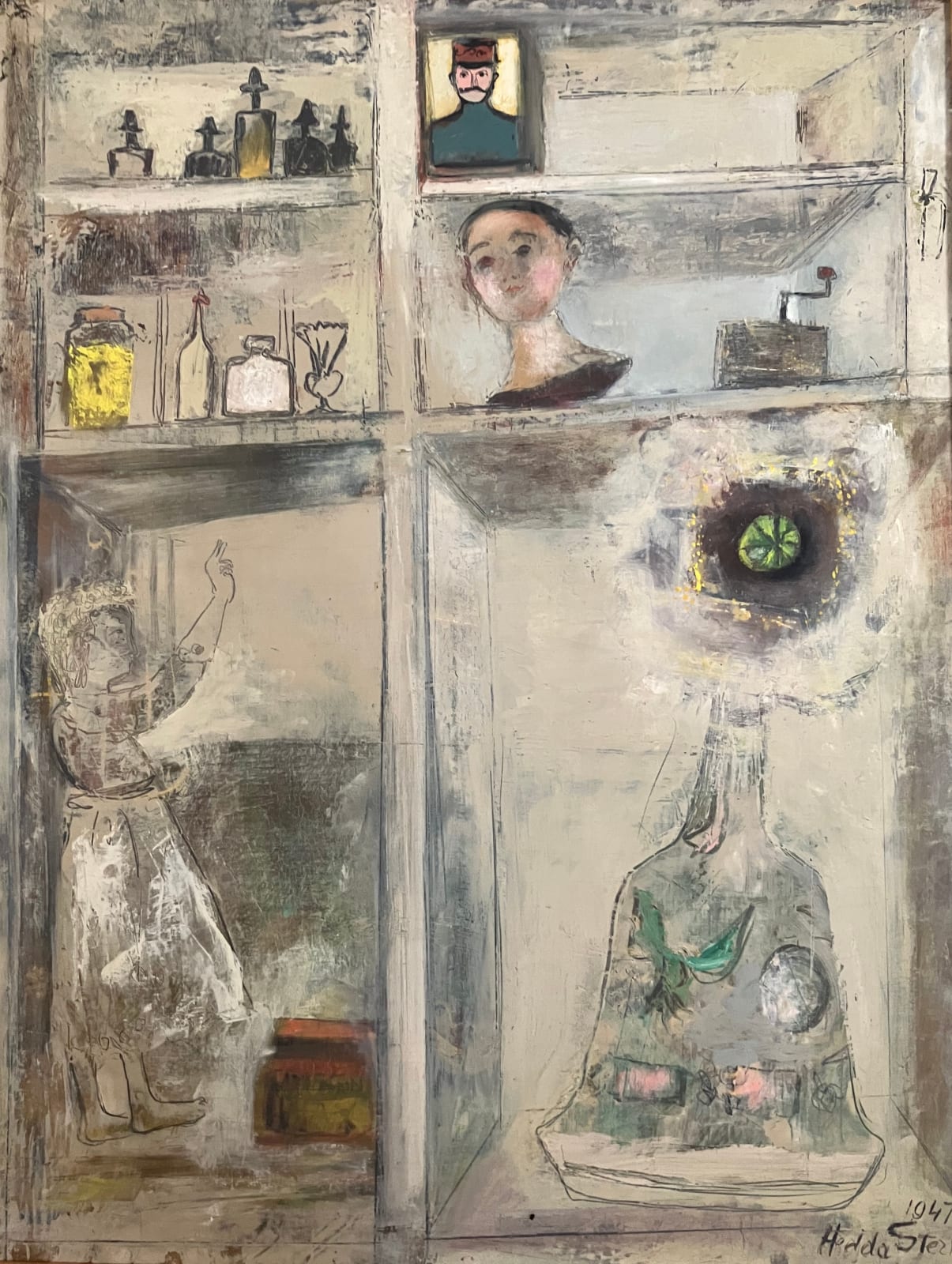Hedda Sterne
71.8 x 56.5 cm
When Hedda Sterne arrived in New York in 1941, a Romanian refugee of World War II, she quickly found artistic inspiration in her new surroundings: "I became totally enthralled visually with the United States, so I became like a premature Pop artist. I started painting my kitchen, the kitchen stove, the bathroom appliances, everything where I lived. Then I went out and I painted Ford cars and the Elevated. ... I became visual when I came here."[1] This is exemplified in her 1947 work Studio Still Life, which depicts the contents of a cabinet in her East 50th Street apartment and reflects the influence of the Surrealist manifestos and modernist movements she imported with her from Europe. A collection of everyday objects adorns the tilted shelves—at the upper center sits a likely portrait of her second husband, Saul Steinberg and an ethereal looking doll, known from contemporary photographs stands at the bottom left. Depicted in a flattened picture plane, the texture of the painting draws parallels to the encaustic works of her mentor Romanian Surrealist Victor Brauner.
Studio Still Life was created the same year as Sterne's first solo exhibition at Betty Parsons Gallery, New York, where Sterne was represented alongside notable contemporaries such as Mark Rothko and Barnett Newman. Sterne was among "The Irascibles," a group of 18 American artists who, in 1950, protested the Metropolitan Museum of Art's juried exhibitions of contemporary art. In January 1951, Life magazine published Nina Leen's now-famous photograph of the group, with Sterne standing on a table at the back. Although associated with the New York School, Sterne resisted the categorization. Her long career intersected with key movements of the twentieth century, including Surrealism and Abstract Expressionism, yet she remained primarily rooted in her surroundings as artistic inspiration, maintaining her freedom of expression, and culminating in a diverse body of work not defined by a single movement, style or mode.
Studio Still Life was featured in the Museum of Modern Art's 1951 circulating exhibition Still Life – 20th Century, which showcased the genre's evolution through various artistic movements. Today, Sterne's works are included in prestigious institutions collections, including The Metropolitan Museum of Art, New York, The Museum of Modern Art, New York, The Art Institute of Chicago, and Tate Modern, London, UK.
[1] Hedda Sterne, in an interview conducted December 17, 1981, by Phyllis Tuchman, for the Archives of American Art
Provenance
The artist;The present owner, circa 1950s until the present
Exhibitions
Museum of Modern Art, New York, Circulating Exhibition, Still Life – 20th Century, 1951Quaker Ridge School, Scarsdale, New York, Quaker Ridge School Art Show, circa 1950s
Subscribe to our mailing list to receive updates from the gallery
* denotes required fields
We will process the personal data you have supplied in accordance with our privacy policy (available on request). You can unsubscribe or change your preferences at any time by clicking the link in our emails.

